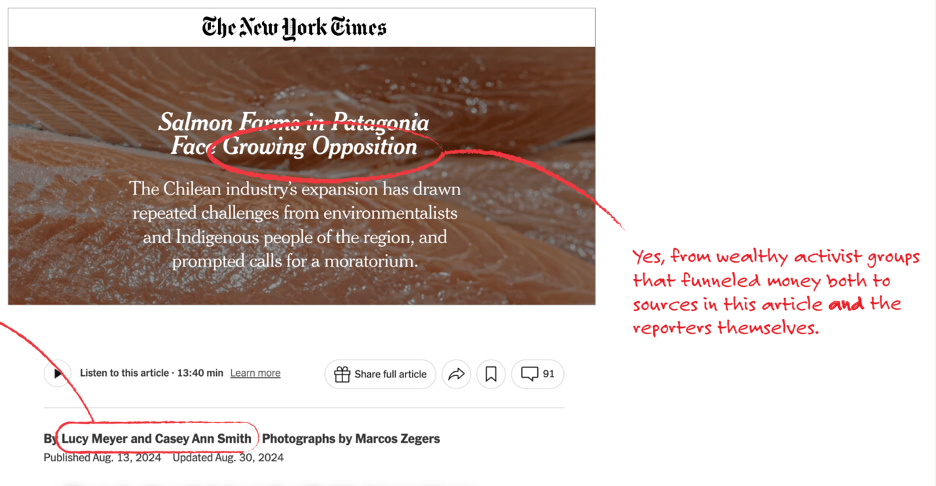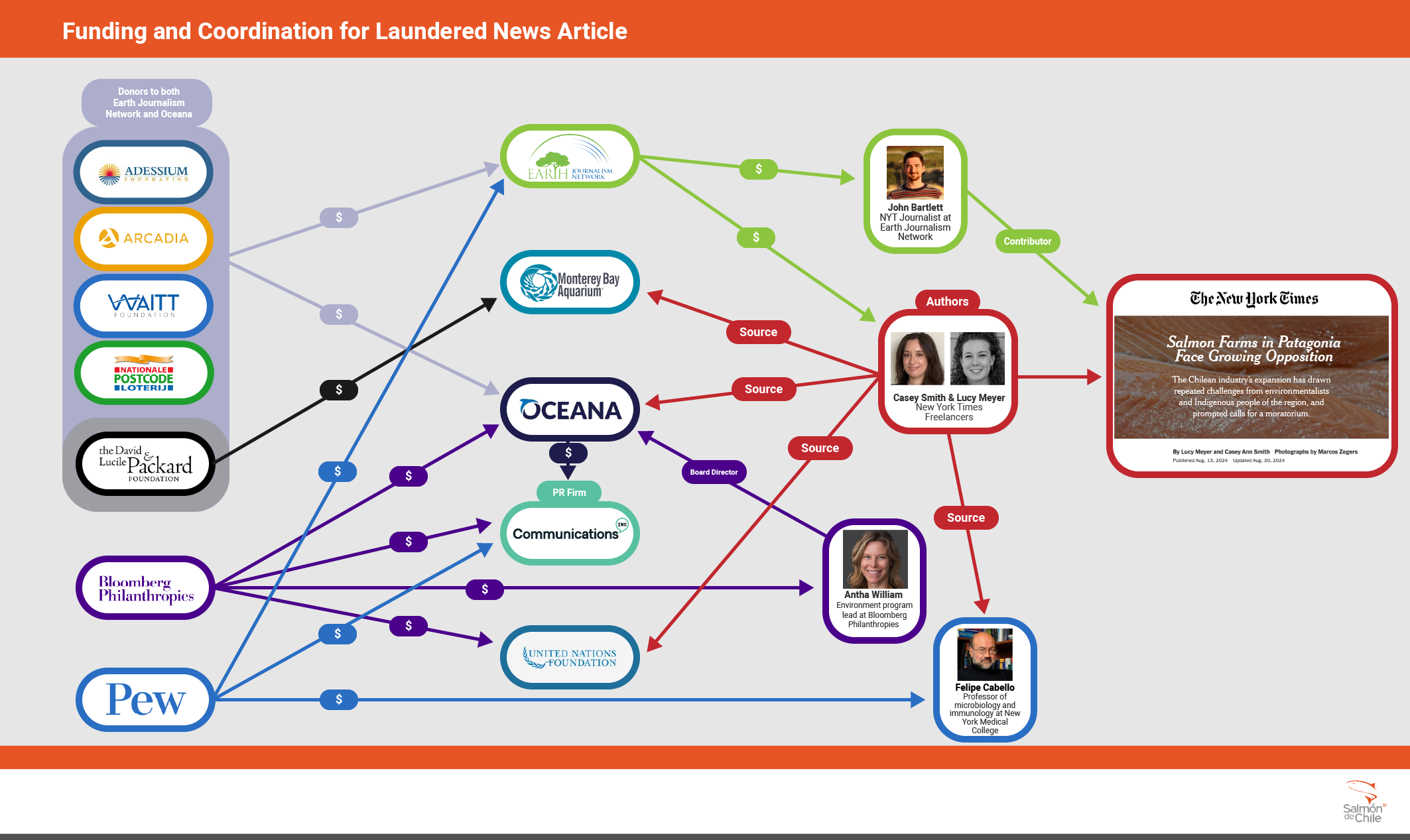Confronting a Distorted and Unethical Attack by the New York Times on Chilean Salmon
Our industry was recently subject to a coordinated attack from well-funded political activists and unscrupulous press in the United States. We owe it to the thousands of workers whose livelihoods depend on responsibly farmed Chilean salmon, and to the millions of Americans who rely on our healthy, affordable fish, to set the record straight on the many dishonest and inaccurate claims made about us. That’s why we are presenting here the results of our careful and in-depth investigation into substantial errors and troubling origins of the New York Times’ August story.
Readers should know first and foremost that the piece seems to have been manufactured from top to bottom by activist groups that have been maligning our industry for years. Those groups and their funding network recruited the journalists, paid them, furnished them with ready-made narratives, hand-picked sources, arranged travel logistics – and bragged publicly about all of it even as the Times sought to obscure the connections. After uncovering this collusion we confronted the Times with it in a letter we sent to its editors:
Again, not only the authors of the piece, but many of the key sources they quote, received money from the activist network that organized and bankrolled the attacks.
At the center is an organization called the Earth Journalism Network, which is explicitly designed to facilitate this kind of manufactured narrative. We invite you to read the full details at this link [Letter to the NYT] and here is a snapshot of how that network operated for this NYT article:
In a phone call with Casey Ann Smith, one of the two bylined authors of the Times piece, she admitted to receiving funding and logistical support from EJN to travel to Chile over five years ago (the only time she visited the country before publishing the piece). But she claims to have conceived and reported it on her own initiative, along with her co-author Lucy Meyer.
But in fact Smith and Meyer did all this while students of EJN executive director James Fahn at the University of California Berkeley’s journalism school, where Fahn and EJN run a program designed “to instruct [students] on how to research, frame, pitch and produce stories”, provides money for travel, and then “work[s] with [students/journalists] to build their stories.” In a publicly available presentation to donors, Fahn specifically boasts about EJN’s “collaboration with the New York Times.”
This is nothing short of vertically-integrated journalism manufacturing, a kind of media laundering, where activist propaganda is repackaged through established news platforms to give it the appearance of legitimate, objective journalism. The result here is an article that has an almost identical structure to the mission statement on Chilean salmon of the largest activist group in the donor network, as this side-by-side comparison reveals.
When we asked Casey Ann Smith if she knew that all the sources to her article also received money from EJN’s donors she said “I am not privy to that and it wasn’t something that was a forethought for us when we were reporting.” In other words, a New York Times reporter failed to do the basic diligence on whether her primary sources were being paid by the same funders that bankrolled her.
For its part, the NYT public relations department told us “the journalists have no affiliation with EJN and this piece was reported and edited entirely independently under NYT’s editorial direction without any contact with EJN.”
But that claim is belied by EJN’s open boasts about “collaboration with the New York Times” that have included at least four additional pieces by separate EJN writers in just the last two years. The same day NYT’s Chile salmon piece was published, the public relations executive at EJN boasted online, “Kudos to Earth Journalism Network for supporting early reporting on this…the big stories that end up in the largest news outlets!” [emphasis theirs.]
In fact, EJN’s relationship with NYT dates back as far as 2010, when NYT’s environmental reporter Andrew Revkin wrote about receiving a paid junket to South America from EJN, where he said he was taught about “the distorting power of journalistic balance”[!] and how “focusing on disputes” between parties to a story with different perspectives “masks established knowledge.”
EJN’s own efforts to target the Chilean salmon industry also date back many years. In 2015, EJN hired a London-based public relations firm to organize a junket to Chile in which more than a dozen reporters “received training” and connections to selected political and local sources. That PR firm, Communications Inc., also has longstanding financial ties to the same donor network as EJN.
Here is an EJN grant application for another junket to Chile that occurred around the time Smith and Meyer traveled there. It boasts of providing “presentations from international scientists, discussions of reporting tips and some introductory training on data journalism” along with paid travel and lodging logistics. Here’s a photo of one of those coordinating sessions in Chile.
We located and downloaded this application, which can be viewed here [EJN Application]
It would be bad enough if this unethical collusion were happening without any substantive disclosure to Times readers or the subjects of its attacks. But in this case the two reporters never gave any representative from our industry a chance to hear or respond to the specific, disparaging claims the Times intended to print, instead asking only perfunctory and generic questions designed to check a box. The resulting article is riddled with factual errors, willful omissions, and agenda-driven distortions designed to smear our industry. We detail them in the attached letter, and we intend to continue holding the Times accountable for misleading the public.




